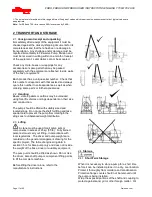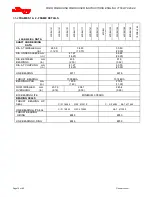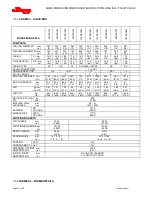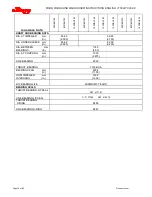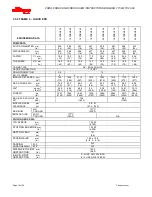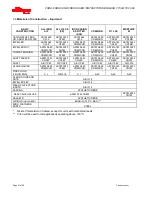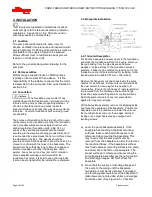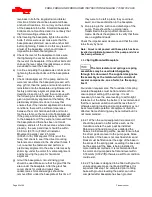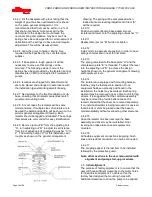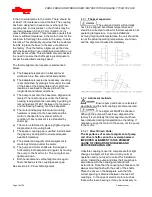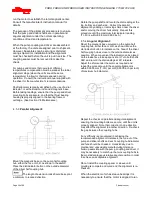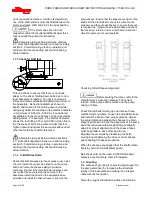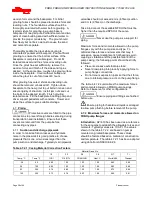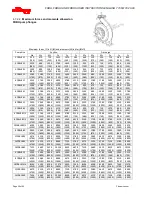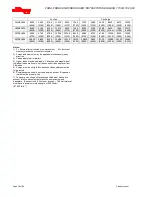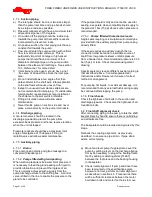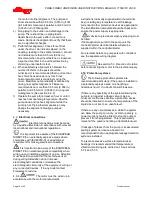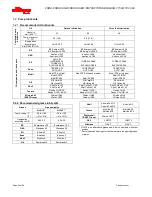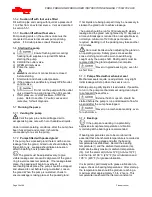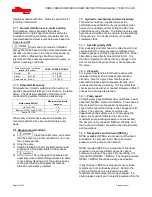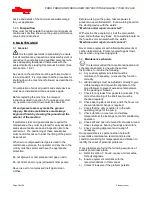
FRBH, FRBHX AND FRBHS USER INSTRUCTIONS ENGLISH 71569178 20-08
Page 23 of 60
Flowserve.com
®
levelness in both the longitudinal and lateral
directions. Shims should be placed at all base
anchor bolt locations. Do not rely on the bottom
of the baseplate to be flat. Standard baseplate
bottoms are not machined and it is not likely that
the field mounting surface is flat.
c) After leveling the baseplate, tighten the anchor
bolts. If shims were used, make sure that the
baseplate was shimmed near each anchor bolt
before tightening. Failure to do this may result in
a twist of the baseplate, which could make it
impossible to obtain final alignment.
d) Check the level of the baseplate to make sure
that tightening the anchor bolts did not disturb
the level of the baseplate. If the anchor bolts did
change the level, adjust the jackscrews or shims
as needed to level the baseplate.
e) Continue adjusting the jackscrews or shims and
tightening the anchor bolts until the baseplate is
level.
f) Check initial alignment. If the pump and motor
were removed from the baseplate proceed with
step g) first, then the pump and motor should be
reinstalled onto the baseplate using Flowserve’s
factory preliminary alignment procedure as
described in section 4.5, and then continue with
the following. As described above, pumps are
given a preliminary alignment at the factory. This
preliminary alignment is done in a way that
ensures that, if the installer duplicates the factory
conditions, there will be sufficient clearance
between the motor hold down bolts and motor
foot holes to move the motor into final alignment.
If the pump and motor were properly reinstalled
to the baseplate or if they were not removed from
the baseplate and there has been no transit
damage, and also if the above steps where done
properly, the pump and driver should be within
0.38 mm (0.015 in.) FIM (Full Indicator
Movement) parallel, and 2.5 mm/m
(0.0025 in./in.) FIM angular. If this is not the
case, first check to see if the driver mounting
fasteners are centered in the driver feet holes. If
not, re-center the fasteners and perform a
preliminary alignment to the above tolerances by
shimming under the motor for vertical alignment,
and by moving the pump for horizontal
alignment.
g) Grout the baseplate. A non-shrinking grout
should be used. Make sure that the grout fills the
area under the baseplate. After the grout has
cured, check for voids and repair them.
Jackscrews, shims and wedges should be
removed from under the baseplate at this time. If
they were to be left in place, they could rust,
swell, and cause distortion in the baseplate.
h) Run piping to the suction and discharge of the
pump. There should be no piping loads
transmitted to the pump after connection is
made. Recheck the alignment to verify that there
are no significant loads.
Check the impeller axial clearance and that the rotor
turns freely by hand.
Note: Grout is not poured until base plate has been
levelled and initial alignment of the pump and driver
has been performed.
4.4.2
Spring Mounted Baseplate
The term isolator and springs or spring
assemblies may be used interchangeably
through this document. The supplier designates
the assembly as the isolator which consists of
several components, one of which is the spring
itself.
Foundation requirements: The foundation for spring
mounted baseplates must be flat and smooth to
ensure proper setting of the springs. It is not
necessary to have the area levelling to within tight
tolerance but the flatter the better. It is recommended
t
hat the maximum variation should be less than ¼”
otherwise spring loading and pump levelling may not
be achieved and operation of equipment could be
affected. Some shimming may be permitted but it is
not recommended.
4.4.2.1
When the pump equipment is received, it
should be placed on a flat surface such as the
foundation where the pump will be installed.
Shipping and handling may have distorted the
base, so initial levelling will be needed. Ensure that
the driver pads are level to the pump pads. Since
the bottom of the base is not machined shims and
blocks must be fitted under the edge of the base in
the areas of the spring pads. Levelling the base will
be the same as if the base is being installed in
more traditional methods. It is recommended that
the motor and pump pads be flat and level within
0.16mm/m [0.002”/ft] otherwise a soft foot condition
could exist.
4.4.2.2 The base is designed to be filled with grout to
ensure adequate mass, inertia and stiffness. It is
important that step 1 be completed prior to filling
base with grout as levelling the pads can not be
completed after baseplate has been grouted.



